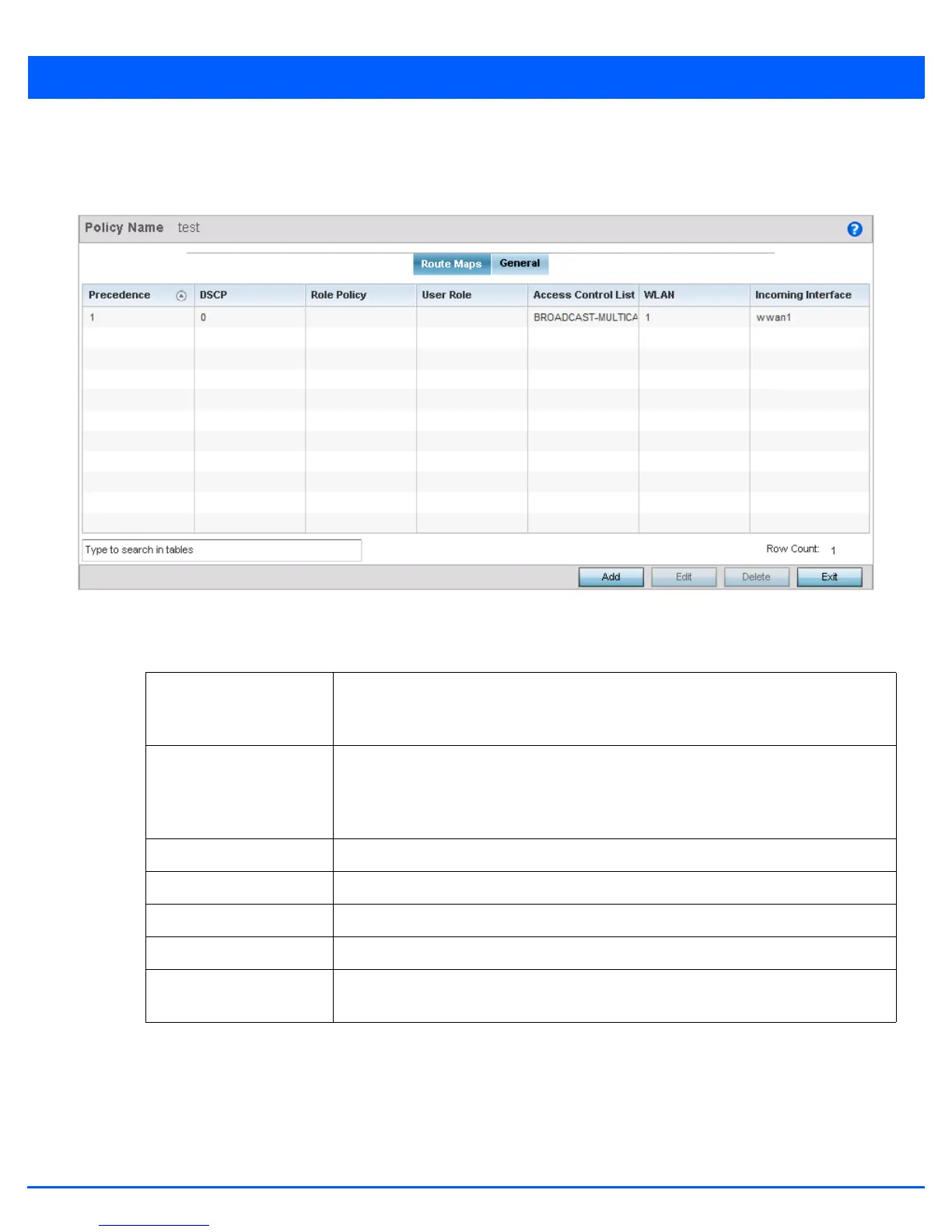7 - 4 WiNG 5.6 Access Point System Reference Guide
5. If creating a new PBR policy assign it a Policy Name up to 32 characters to distinguish this route map configuration from
others with similar attributes. Select Continue to proceed to the Policy Name screen where route map configurations can
be added, modified or removed. Select Exit to exit without creating a PBR policy.
Figure 7-2 Policy Based Routing screen - Route Maps tab
6. Refer to the following to determine whether a new route-map configuration requires creation or an existing route-map
requires modification or removal:
7. Select Add or Edit to create or modify a route-map configuration.
Precedence Lists the numeric precedence (priority) assigned to each listed PBR configuration. A route-
map consists of multiple entries, each carrying a precedence value. An incoming packet is
matched against the route-map with the highest precedence (lowest numerical value).
DSCP Displays each policy’s DSCP value used as matching criteria for the route map. DSCP is
the Differentiated Services Code Point field in an IP header and is for packet classification.
Packets are filtered based on the traffic class defined in the IP DSCP field. One DSCP value
can be configured per route map entry.
Role Policy Lists each policy’s role policy used as matching criteria.
User Role Lists the user role defined in the Role Policy.
Access Control List Displays each policy’s IP ACL used as an access/deny filter criteria for the route map.
WLAN Displays each policy’s WLAN used as an access/deny filter for the route map.
Incoming Interface Display the name of the access point WWAN or VLAN interface on which the packet is
received for the listed PBR policy.

